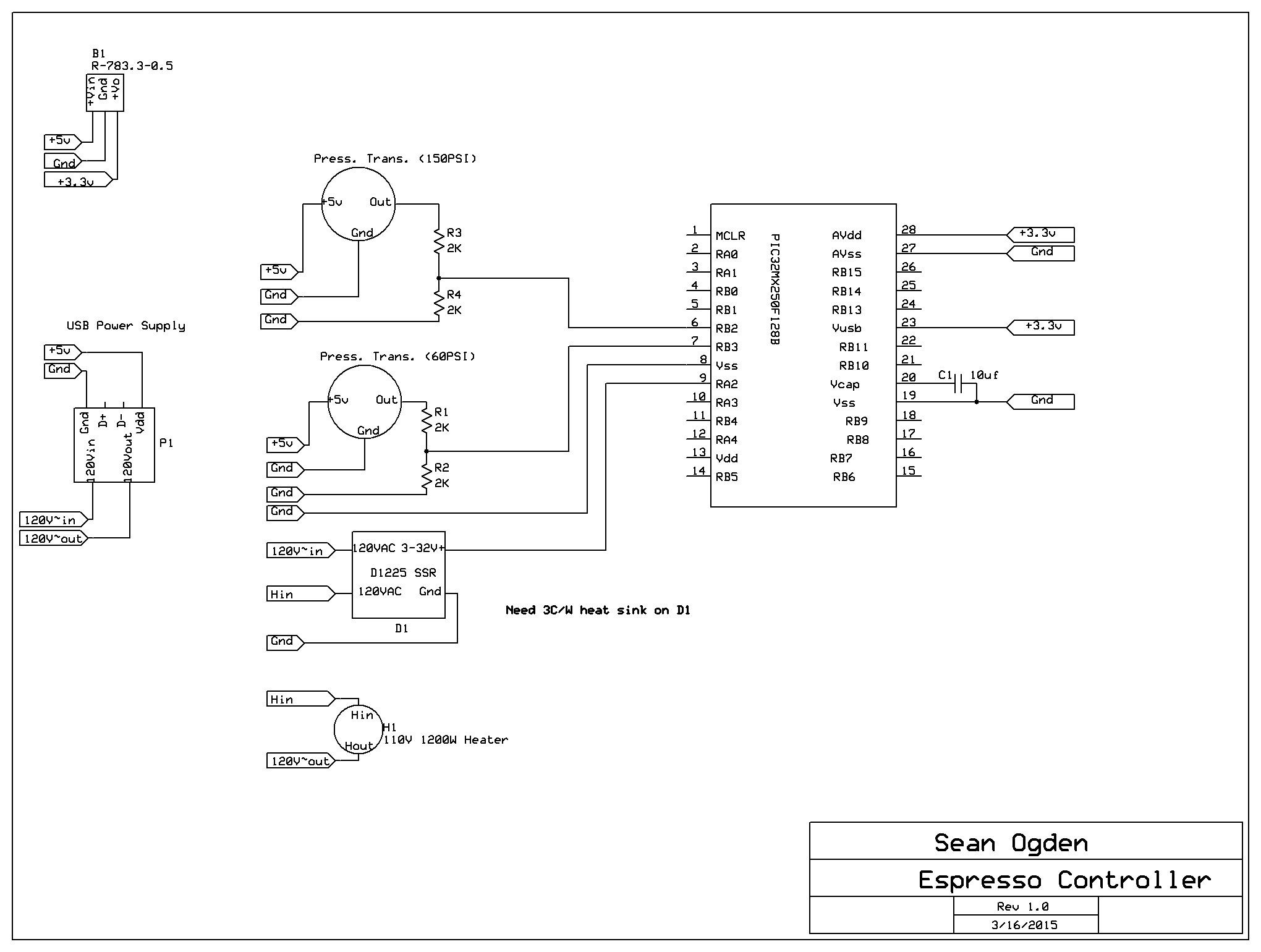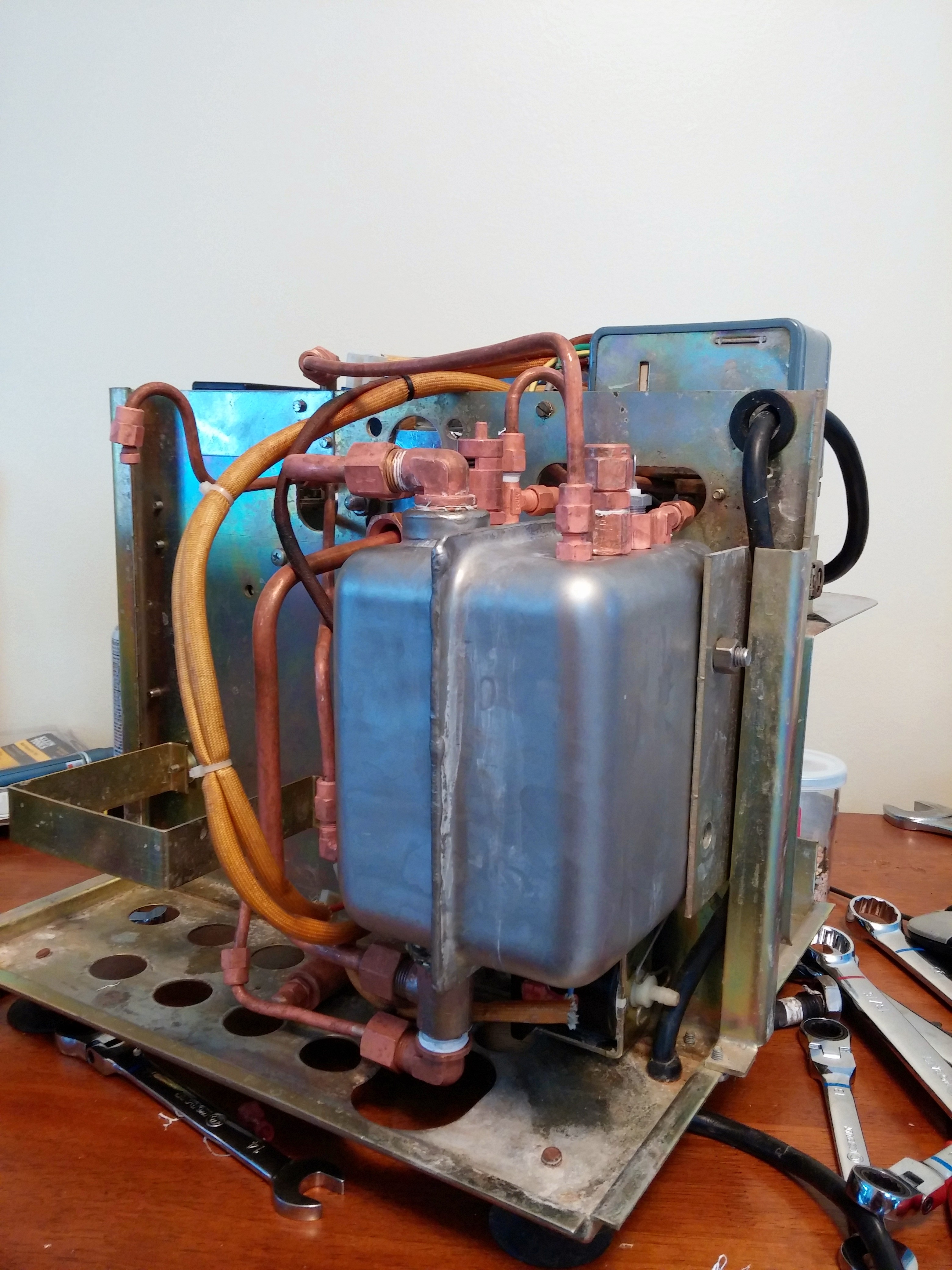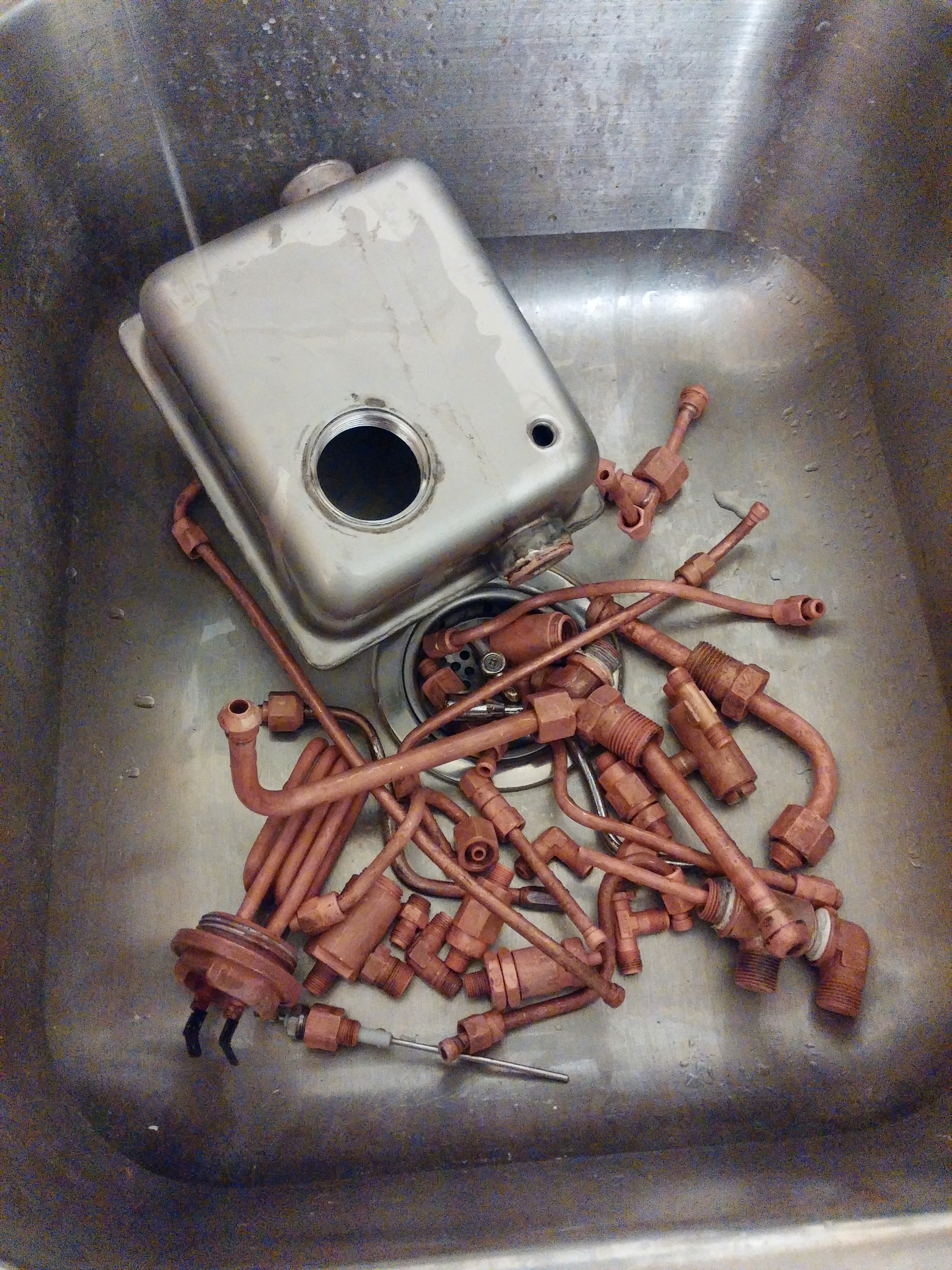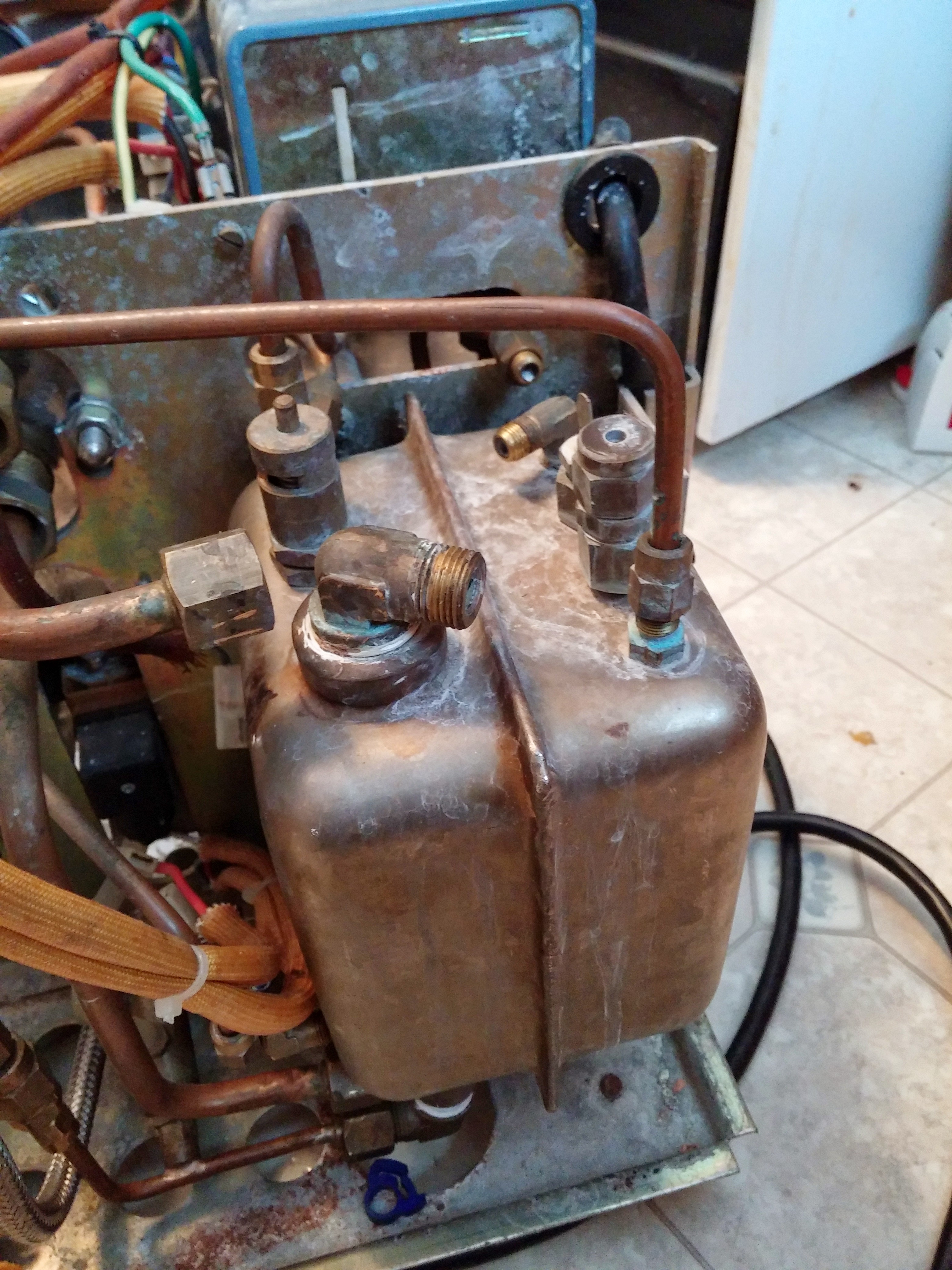-
Designing the circuits
03/17/2015 at 19:00 • 0 commentsMy end goal is to print a circuit board in order to make the project compact enough to fit within the case of the machine. I've never done that before and I'd like not to screw it up, so I'm drawing the schematic out so I can think about it and verify that it's correct.
I started designing the circuit for the controller today. The basic components of the machine are the vibration pump and the heater. Both use 120VAC, so I'll need to use two solid state relays in order to control them with the PIC32.
At this time, I've designed the circuit to measure two 5V pressure transducers and switch one SSR to control the heating element. I have yet to design for the brew control, or the screen but that will be done later.
Power supply
I will be using a USB charger as the power supply, directly wired to the 120V coming from the wall. This was easier and safer than trying to design my own power supply (I'm not an EE), and it supplies the 5V I need to run the sensors. I also need 3.3V to run the PIC32, so I've used a dc-dc step-down converter to supply that voltage from the 5V supply. All of the Vdd and Vss pins on the PIC32 are connected to the 3.3V and Ground. In addition, I have the 10uf capacitor connected to Vcap and to ground, as per the following instructions on the datasheet "The Vcap pin must not be connected to Vdd, and must have a Cefc capacitor with at least 6V rating connected to ground". The capacitor can be either ceramic or tantalum.
Reading 5V sensors on the 3.3V PIC32
In order to read the 5V sensors from the PIC32, I needed to divide the voltage to something lower than 3.3V. For this, I've used a voltage divider with 2 2k ohm resistors on each sensor, so the output voltage is 5V*(R2/(R1+R2)) = 0-2.5V.
Switching 120VAC heating element with 3.3VDC PIC32
For switching on and off the heating element, I had planned on using a 10A 120VAC SSR. However, the heating element being 1200W 110V means that I need something at least 11A. So instead I'm using a 40A 120VAC SSR that I found on a surplus site. It does not have a datasheet, so I'm just going to have to try and see if it needs a heat sink.
![]()
-
Reassembly
03/17/2015 at 18:34 • 0 commentsNow that the machine is completely clean, I had to reassemble it. Thankfully, I took a LOT of photos. It's a simple device, but many of the copper pipes look quite similar and are not the same. I forgot to take a photo of the whole thing back together, but here's most of it. I'm going to clean up the case at a later date and probably paint it, but at this time it was -20 degrees F outside, and so paint would likely not dry. So for now I'm just making sure everything works. Surprise, it does work. The steam pressure on this thing is impressive.
![]()
-
Cleaning up
03/17/2015 at 18:29 • 0 commentsThe first step was to clean up the components. This machine had been sitting with water in it for quite a while. There was a lot of scale buildup that needed to be cleaned up before I was going to taste anything that came out of it. So, I disassembled the whole machine and put all of the parts in a bath of hot Citric acid for several hours.
It came out very clean. You can see at the bottom of the heat exchanger where the fitting has become detached due to a failed weld. This was the culprit of the leak, and was easy enough to repair myself without having to buy any parts.
![]()
-
Humble beginnings
03/17/2015 at 18:24 • 0 commentsThe project started as a way for me to learn how an espresso machine works, and also taste some good coffee. Espresso machines that are worthwhile tend to be quite expensive. However, as with many high end kitchen appliances, it's not a very complicated machine. In fact, it's mostly a pile of copper pipes, a heater and a pump. The entire thing is controlled by mechanical switches and every component is 120VAC so there's not a diode in the entire thing.
This is good news because it means that if you can wire a switch, and braze copper pipe, you can probably fix an old espresso machine, and even if its discontinued you can make new parts with standard plumbing fittings and basic electronic components.
I purchased my machine on eBay very cheaply. As in scrap metal cheap. It's an old machine and the owner didn't really know how it worked, and it was leaking from the heat exchanger. Unfortunately they don't sell that heat exchanger anymore. The machine is a Mini Wega from the 1990s (very similar to, but not to be confused with the Wega Mininova). A used one in good condition is about $2,000 last I checked, so it was a worthwhile project to see if I could get it working again. Here's a photo of what it looked like.
![]()
PIC32 Espresso Machine Controller
Using a PIC32 to control brew pressure, steam pressure, and extraction time on a heat exchanger style espresso machine.
 Sean Ogden
Sean Ogden


